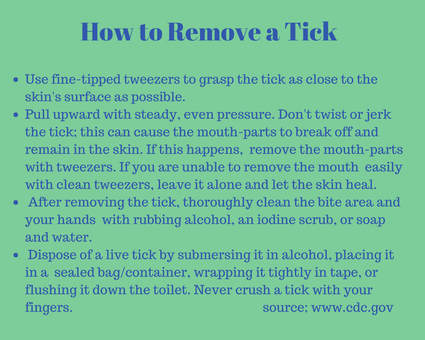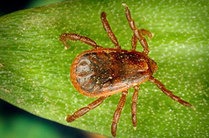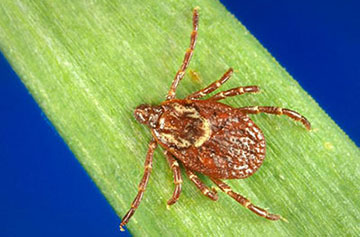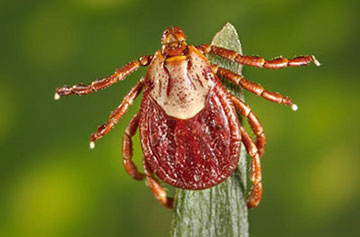
Tick Borne Disease
Spring is here, the grass is green, the creeks are high, and the ticks are out! Springtime is the time the ticks are most actively questing for food sources after a long winter. Ticks attach via their mouthparts and will take a blood meal and engorge (swell up) before detaching. After coming out of dormancy in the spring, the ticks are hungry and eager to feed. This means that early spring is the time we see more ticks on our domestic animals.
According to the CDC, the primary species of tick found in Montana are the Brown Dog Tick (Rhipicephalus sanguineus), Rocky Mountain Wood Tick (Dermacentor andersoni), and the American Dog Tick (Dermacentor variabilis). The American Dog Tick is primarily found in eastern Montana, whereas the Brown dog tick and the Rocky Mountain Wood Tick are found throughout the state.
Aside from being a nuisance and a parasite, ticks are known to transmit bacteria, viruses and protozoa to other animals, including humans. In Montana, the disease we worry about the most is Rocky Mountain Spotted Fever (RMSF). All three species of ticks found in Montana can transmit RMSF. RMSF is transmitted after a tick has attached and has begun to feed. The tick needs to fully attach before transmission can occur. Additionally nymphal ticks (immature stages of development) can also transmit disease.
These immature stages can be extremely small and difficult to see.
Ok, so what do we do about it? Prevention: Several products are on the market to prevent ticks from attaching or to kill them when they bite the dog or cat. Talk to your veterinarian about medication options and what is right for your pet.
Avoid folklore remedies such as "painting" the tick with nail polish or petroleum jelly, or using heat to make the tick detach from the skin. Your goal is to remove the tick as quickly as possible–not waiting for it to detach.
Resources:
https://www.cdc.gov/ticks/index.html
https://www.cdc.gov/rmsf/
Spring is here, the grass is green, the creeks are high, and the ticks are out! Springtime is the time the ticks are most actively questing for food sources after a long winter. Ticks attach via their mouthparts and will take a blood meal and engorge (swell up) before detaching. After coming out of dormancy in the spring, the ticks are hungry and eager to feed. This means that early spring is the time we see more ticks on our domestic animals.
According to the CDC, the primary species of tick found in Montana are the Brown Dog Tick (Rhipicephalus sanguineus), Rocky Mountain Wood Tick (Dermacentor andersoni), and the American Dog Tick (Dermacentor variabilis). The American Dog Tick is primarily found in eastern Montana, whereas the Brown dog tick and the Rocky Mountain Wood Tick are found throughout the state.
Aside from being a nuisance and a parasite, ticks are known to transmit bacteria, viruses and protozoa to other animals, including humans. In Montana, the disease we worry about the most is Rocky Mountain Spotted Fever (RMSF). All three species of ticks found in Montana can transmit RMSF. RMSF is transmitted after a tick has attached and has begun to feed. The tick needs to fully attach before transmission can occur. Additionally nymphal ticks (immature stages of development) can also transmit disease.
These immature stages can be extremely small and difficult to see.
Ok, so what do we do about it? Prevention: Several products are on the market to prevent ticks from attaching or to kill them when they bite the dog or cat. Talk to your veterinarian about medication options and what is right for your pet.
Avoid folklore remedies such as "painting" the tick with nail polish or petroleum jelly, or using heat to make the tick detach from the skin. Your goal is to remove the tick as quickly as possible–not waiting for it to detach.
Resources:
https://www.cdc.gov/ticks/index.html
https://www.cdc.gov/rmsf/





 RSS Feed
RSS Feed



